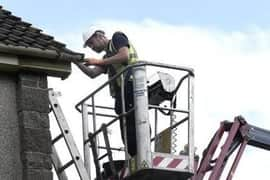RAAC: Hundreds to be relocated in Aberdeen after collapse-prone concrete found in homes
and live on Freeview channel 276
Hundreds of people are being moved out of their homes in Aberdeen as they contain collapse-risk concrete. Aberdeen City Council said reinforced autoclaved aerated concrete (Raac) panels were found in around 500 homes in the city’s Balnagask area last year, including 364 council properties.
A structural engineers’ report to the council recommended the council tenants affected be relocated to alternative accommodation within the city as soon as possible.
Advertisement
Hide AdAdvertisement
Hide AdCouncillors accepted a recommendation from council officers that tenants be permanently rehomed. Officers are examining options for the long-term viability for the site, including remedial works or demolition.


Reinforced autoclaved aerated concrete (RAAC) is a lightweight type of concrete. However, a large portion of the RAAC found in buildings has passed the end of its safe life and is now in danger of collapsing, even though it is still made and can be used safely.
The Standing Committee on Structural Safety (SCOSS) has noted that: "Although called “concrete”, (RAAC) is very different from traditional concrete and, because of the way in which it was made, much weaker.
"RAAC was used in schools, colleges and other building construction from the 1950s until the mid-1990s. It may therefore be found in any school and college building (educational and ancillary) that was either built or modified in this time period."
Comment Guidelines
National World encourages reader discussion on our stories. User feedback, insights and back-and-forth exchanges add a rich layer of context to reporting. Please review our Community Guidelines before commenting.
